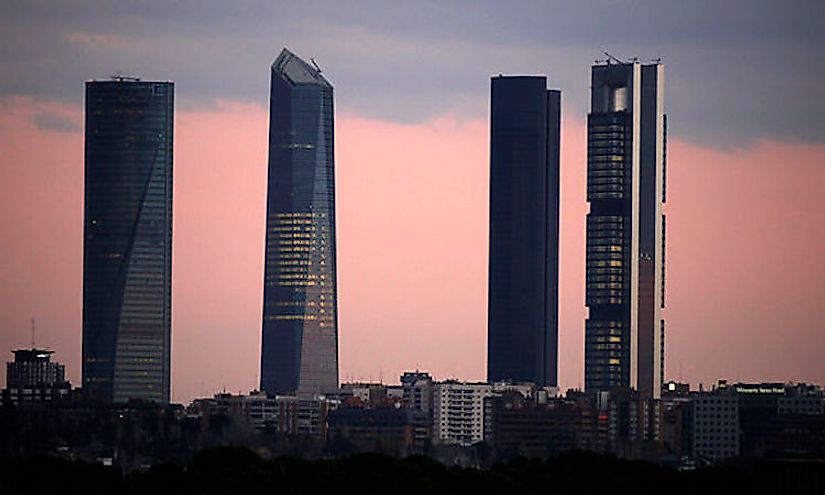The Economy Of Spain

Spain is the fourteenth-largest economy in the world by gross domestic product(GDP) and one of the leading in terms of purchasing power parity (PPP).The country is classified as high income category being members of the European Union, the Organization for Economic Cooperation and Development (OECD) and the World Trade Organization (WTO). The country is also one of the leading high-level human development countries in the world. The country was affected by the global financial crisis of 2007-2008 leaving a state of recession for the period 2009-2013. The economy of Spain contracted by about 9% as a result.
An Overview Of The Economy Of Spain
The country’s GDP as at the end of 2016 was $1.536 trillion with purchasing power parity (PPP) of $1.704 trillion. The country’s GDP growth for the year 2016 was 3.2%. Being in the European Union, it uses the Euro as its currency. The unemployment rate stands at 18.6% with the per capita income being $26700. It is ranked 33rd in the ease of doing business.
Leading Industries Of Spain
Several of Spanish companies have gained the reputation as credible multinationals making them operate with ease in the culturally close Latin America countries. Their expansion progress into Asian countries such as China and India have given them the competitive advantage over other European companies. Some of them deal in electronics such as Telefonica, Movistar, and Gambesa among others. Inditex which owns other popular clothing brands such as Zara Fashion is also based in Spain. The country’s highly developed infrastructure is the other strong catalyst of its economic growth. It is the fifth best in EU and ranks ahead of countries like Japan and the US in terms of quality transport network especially high-speed trails. These have improved its manufacturing and service industries’ competitiveness.
Top Export Goods And Export Partners Of Spain
The country is a huge exporter but mainly to the countries within the European Union. The leading ones are Germany (11%), France (15.7%), Italy (7.4%), UK (7.4%), and Portugal (7.1%). It sells machinery, electronics, pharmaceuticals and other consumer products. The data relates to the year ended 2016.
Top Import Goods And Import Partners Of Spain
The country imports fuel, semi-finished products, chemicals and other consumer products. Its imports come from Germany (14%), UK (11%), China (7%), and Italy (6.5%) among others. The bulk of its trade is with members of the EU.
Challenges To The Economy Of Spain
The country has very high unemployment rates which were aggravated by the world economic crisis. It is yet to recover fully as the economy has not created adequate jobs efficiently to absorb them. The country is also devoid of many natural resources such as fuel and has to import from other countries. This affects the productivity of its industries through exchange rate fluctuations.
Future Plans
The Spanish government has instituted a tight regulatory framework for the banking system in the country to ensure the country’s stability. The measures are aimed at eliminating aspects of investors’ panic that could harm the economy. It has led to the taking over of some of the banks to prevent their collapse. The government is also working on programs to reduce the low employment levels.











